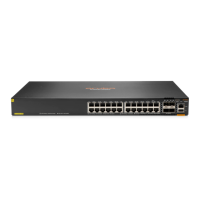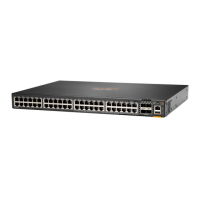91
• BPDU type—The value is 0x02 for RSTP BPDUs.
• Flags—All 8 bits are used.
• Version1 length—The value is 0x00, which means no version 1 protocol information is
present.
RSTP does not use TCN BPDUs to advertise topology changes. RSTP floods BPDUs with the TC
flag set in the network to advertise topology changes.
Basic concepts in RSTP
Port roles
In addition to root port and designated port, RSTP also uses the following port roles:
• Alternate port—Acts as the backup port for a root port. When the root port is blocked, the
alternate port takes over.
• Backup port—Acts as the backup port of a designated port. When the designated port is
invalid, the backup port becomes the new designated port. A loop occurs when two ports of the
same spanning tree device are connected, so the device blocks one of the ports. The blocked
port is the backup port.
• Edge port—Directly connects to a user host rather than a network device or network segment.
Port states
RSTP uses the discarding state to replace the disabled, blocking, and listening states in STP. Table
10 shows the differences between the port states in RSTP and STP.
Table 10 Port state differences between RSTP and STP
STP port state
RSTP port
state
Sends
BPDU
Learns MAC
addresses
Forwards user
data
Disabled Discarding No No No
Blocking Discarding No No No
Listening Discarding Yes No No
Learning Learning Yes Yes No
Forwarding Forwarding Yes Yes Yes
How RSTP works
During RSTP calculation, the following events occur:
• If a port in discarding state becomes an alternate port, it retains its state.
• If a port in discarding state is elected as the root port or designated port, it enters the learning
state after the forward delay. The port learns MAC addresses, and enters the forwarding state
after another forward delay.
{ A newly elected RSTP root port rapidly enters the forwarding state if the following
requirements are met:
− The old root port on the device has stopped forwarding data.
− The upstream designated port has started forwarding data.
{ A newly elected RSTP designated port rapidly enters the forwarding state if one of the
following requirements is met:
− The designated port is configured as an edge port which directly connects to a user
terminal.

